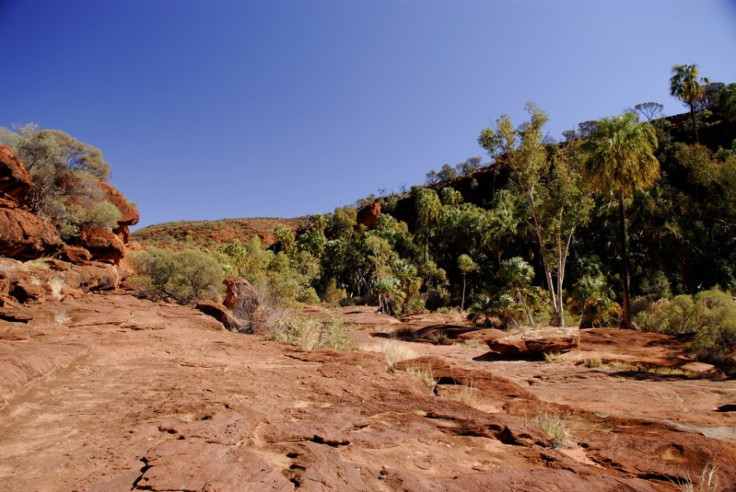Oldest Fossils on Earth Suggest Possibility of Life On Mars

Scientists have uncovered the earth's oldest fossils in a remote part of the Australian outback and say that they show convincing evidence that cells and bacteria were able to thrive in an oxygen-free world nearly 3.4 billion years ago.
The microscopic fossils are the remains of the oldest known lifeforms on earth. They were found near an isolated watering hole in the middle of the Outback, and scientists say that they belonged to primitive bacteria that lived on earth at a time when it was probably too hostile for life.
Thus, scientists argue that the primitive microbes used sulfur instead of oxygen to generate energy from food.
If this is true, the findings support the idea that similar life forms could exist on other planets where oxygen levels are low or non-existent.
Martin Brasier of Oxford University worked on the team that made the discovery. He argues:
Could these sorts of things exist on Mars? It's just about conceivable. This evidence is certainly encouraging and lack of oxygen on Mars is not a problem,
In the study, published on Sunday in the journal Nature Geoscience, Brasier's team explained that the tiny fossils were discovered in rocks that were originally formed in shallow seas near the coast. They were preserved between the quartz and sand grains in some of the oldest shoreline known on earth in some of the oldest sedimentary rock ever discovered.
This suggests that beaches were likely the key habitat where the earth's first lifeforms thrived.
David Wacey, of the University of Western Australia, told the Independent:
The environment in which the microfossils were found is important - it extends the record of life in shoreline or beach-like environments by about 200 million years. This suggests that beaches could have been the setting for the origin of life itself.
Analyzing the fossils, the rocks they were found in and the surroundings, scientists built a picture of earth at 3.4 billion years ago as a hot, violent, murky place where there was a pervasive threat of volcanic eruptions and meteor strikes.
Yet, Wacey adds:
The discovery gives good solid evidence for life over 3.4 billion years ago. It confirms there were bacteria at this time, living without oxygen.
While the earth is estimated to be about 4.5 billion years old, the planet's hostile environment was previously thought to be inhospitable for life until about 3.8 billion years ago.
While previous studies have indicated the presence of similar microfossils in 3.5 billion-year-old rocks, the finds have been disputed.
The latest microfossils were subjected to exhaustive tests that confirmed that they were once living cells and not just the product of non-living chemical reactions.
Also, because they were discovered in rock sandwiched between layers from two recorded volcanic eruptions, the fossils' date of origin could be pinpointed within a few tens of millions of years.
Brasier, co-leader of the study, adds that sulfur bacteria are still common today:
Sulfur bacteria are found in smelly ditches, soil, hot springs, hydrothermal vents - anywhere where there's little free oxygen and they can live off organic matter.
Researchers say this may be the closest that science will ever get to the mysterious origin of life on earth.
Furthermore, the findings should boost the search for life on mars.
David Des Marias, an astrobiologist at the NASA Ames Research Center, told the Washington Post:
I mean, wow, we now know that sulfur-based metabolism happened very early on Earth. And early Mars had water and sulfur. It shared in many ways the environment of the early Earth. This gives us confidence that looking for these types of organisms on Mars is a good strategy.
© Copyright IBTimes 2024. All rights reserved.






















